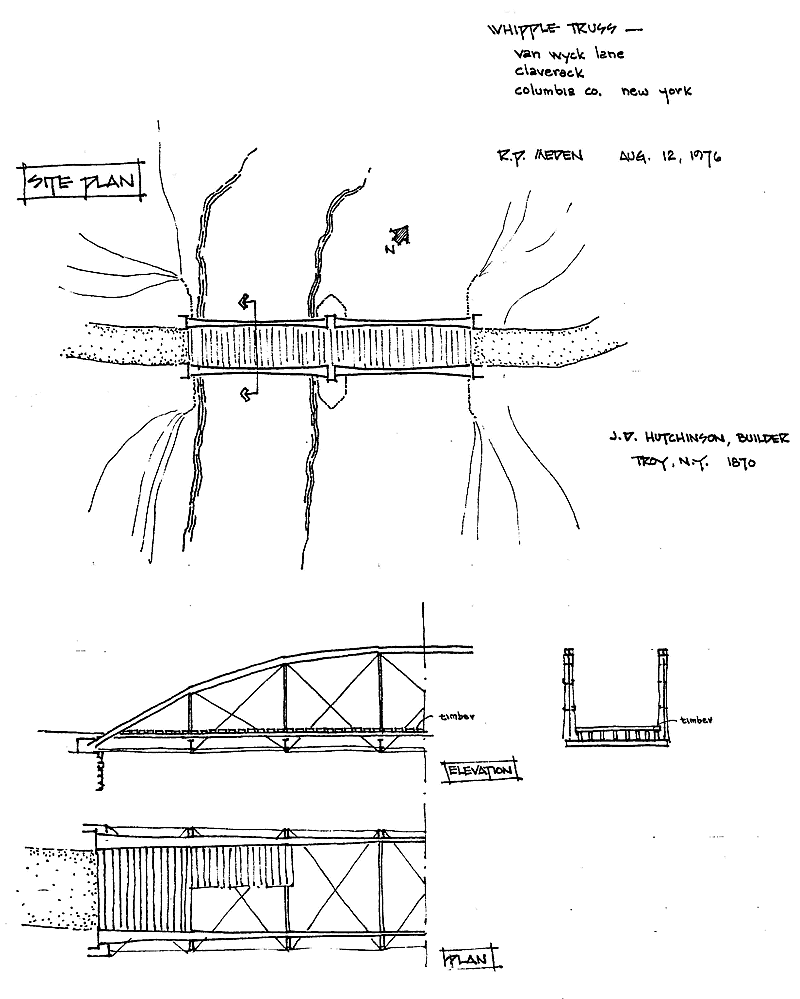SAVE THE ICONIC SHAW BRIDGE
HISTORY
The Shaw Bridge (owned by the Town of Claverack NY and named after William Shaw, the nearest farmer when it was built) is the best example of Whipple's Bowstring Truss, patented in 1841 by engineering genius Squire Whipple. His design was the first to use scientific principles and these principles were published in his seminal 1846-7 book, A Work on Bridge Building.
For the first time in the world, this book presented the correct methods of analyzing and designing a truss using the properties of the appropriate materials. Whipple's technique, now known as the method of joints, is still the way that truss analysis is taught. He used both trigonometry and geometrical construction – the force polygon method – to find his member forces.
The Whipple Bowstring Truss Bridge was designed for the Enlarged Erie Canal in New York State (1836-1862) and hundreds of were built for the canal and other waterways. The Shaw Bridge was one such bridge, built in 1870 by John D. Hutchinson, for the New York City to Albany Post Road over the Claverack Creek (a tributary of the Hudson River). This bridge is one of only eight of the vintage Whipple Bowstring Truss bridges left (including one in Japan), the lone one in its original location, the only double span, and unchanged except for the non-original wood deck and guard rails. It clearly exemplifies the robust original design, including the use of cast iron for compression members, wrought iron for tension members, and a wooden deck that could be replaced without affecting the strength of the bridge. Since the Shaw Bridge is uniquely in its original location, it also has its original masonry abutments and pier. Despite being used for 120 years and closed for almost 30 years, the bridge is in remarkably good condition, which speaks well for its original design and materials (19th century cast and wrought iron being more rust resistant than most modern steel).

Whipple's importance cannot be overstated. Besides clearly documenting theoretical principles for bridge design for the first time, he also designed trapezoidal, vertical lift, and swing bridges; promoted the use of prefabricated components; life-cycle costing; and was important for the Enlarged Erie Canal and early railway industry, helping make New York City become a world leader. The bridge is clearly eligible for Historic Civil Engineering Landmark status and could be considered a World Heritage Bridge candidate. The meticulous restoration of the Shaw Bridge to its original design will be a fitting tribute to the genius of Squire Whipple, who gave modern bridge engineers the basic tools for bridge design.
